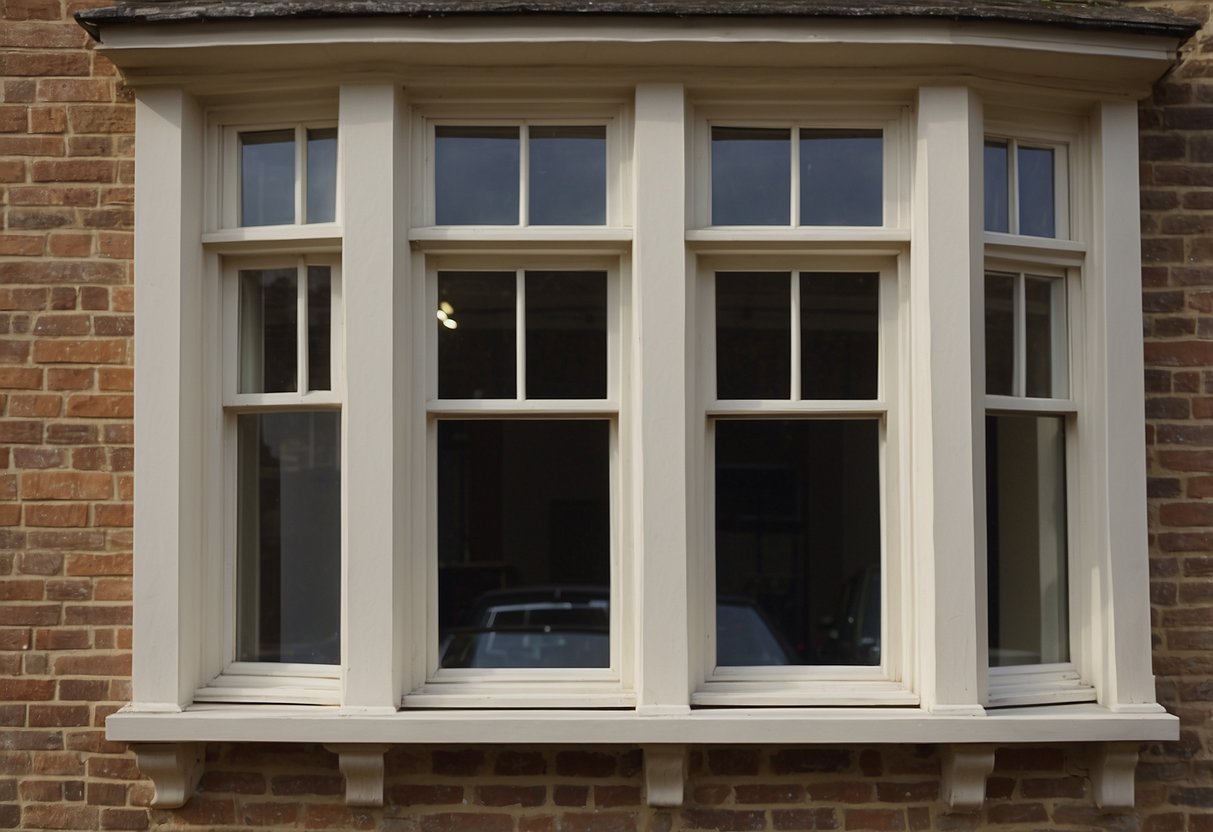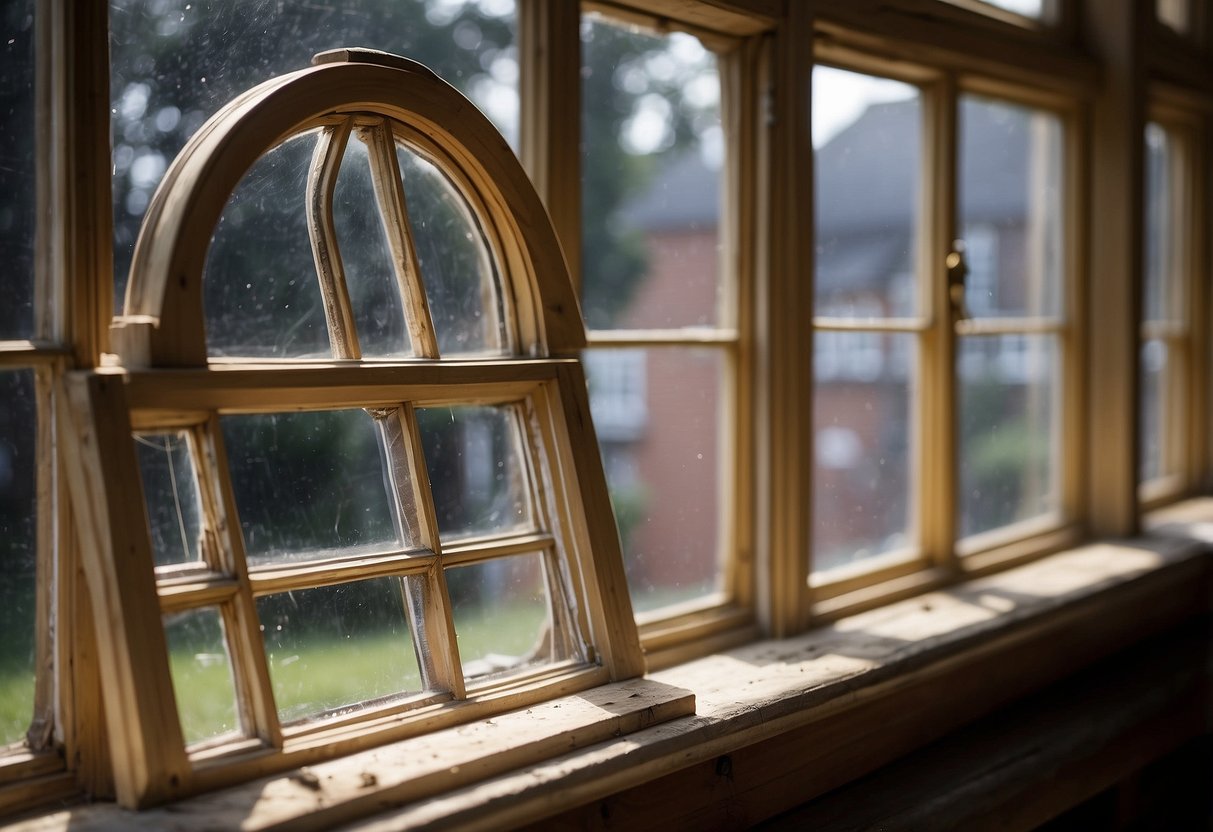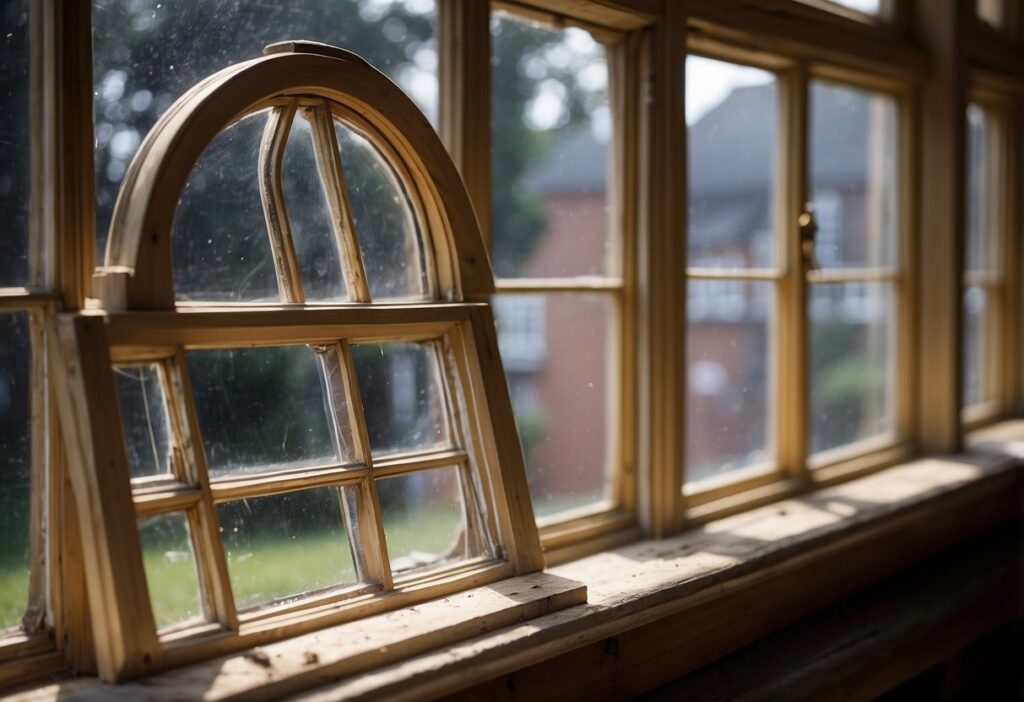The Aesthetic and Practical Benefits of Restoring Sash Windows: Reviving Charm and Efficiency in Your Home
Sash windows add charm and character to homes, but they often need some care to keep them looking and working their best. Restoring sash windows can bring back their original beauty while also improving their function.

By restoring sash windows, homeowners can enjoy both aesthetic appeal and practical benefits, creating a more attractive and comfortable living space. Old sash windows that rattle or let in draughts can be fixed up to work smoothly and keep homes warmer. This not only makes the house look nicer but also helps save on heating costs.
Many people worry that fixing up sash windows takes too much time and money. But experts say this isn’t always true. With the right know-how, restoring sash windows can be done without spending too much. It’s a great way to keep the charm of an older home while making it more comfortable to live in.
Understanding Sash Windows

Sash windows are a key feature of many period properties. They add charm and character whilst offering practical benefits. Let’s explore their historical significance and how they work.
Historical Value and Architecture
Sash windows have been around since the 17th century. They gained popularity in Georgian and Victorian homes. These windows are a hallmark of British architecture.
The design of sash windows reflects the era they were built in. Georgian sash windows often have six panes in each sash. Victorian ones might have a single pane in the bottom sash and six in the top, these are the ones I remember most from my childhood days.
Sash windows can boost a property’s value. They’re a sign of quality craftsmanship. Many people love the elegant look they give to a building’s facade.
Components and Functionality
A sash window has two frames that slide up and down. These frames are called sashes. They sit in vertical grooves in the window frame.
The sashes are balanced by weights hidden in the frame. These weights are connected to the sashes by cords. This clever system makes the windows easy to open and close, although as a child I do remember them getting stuck with paint.
Pulleys and sash cords are vital parts. They allow the sashes to move smoothly. The glazing bars divide the glass into smaller panes. This adds to the window’s traditional look.
Timber is the traditional material for sash windows. It’s prized for its natural beauty and insulating properties. Modern versions may use uPVC or aluminium, but many prefer the classic timber look.
The Benefits of Restoration

Restoring sash windows offers many advantages for homeowners. It helps preserve a property’s character whilst improving energy efficiency and reducing noise pollution.
Preserving Character
Restoring timber sash windows helps maintain a building’s historical and architectural integrity. This is vital for keeping the charm of period homes intact. Restored windows retain their original features, such as ornate mouldings and unique glazing patterns.
Homeowners can enjoy the beauty of authentic windows without sacrificing modern comforts. Skilled craftsmen can repair damaged woodwork and replace broken glass, bringing the windows back to their former glory.
By choosing restoration over replacement, property owners contribute to the preservation of architectural heritage. This can increase the value of the home and make it more appealing to potential buyers who appreciate period features.
Enhancing Energy Efficiency
Contrary to popular belief, restored sash windows can be energy efficient. The restoration process often includes adding draught-proofing measures and improving insulation.
Skilled restorers can:
- Install brush seals around the sashes
- Add secondary glazing
- Apply weather stripping
These improvements significantly reduce heat loss, making homes warmer and cosier. Homeowners may see a noticeable decrease in their energy bills after restoration.
The cost of restoration can often be recouped through long-term energy savings. It’s a smart investment that combines historical preservation with modern energy efficiency standards.
Noise Pollution Reduction
Restored sash windows can dramatically reduce noise pollution from outside. This is especially beneficial for homes in busy urban areas or near main roads.
The restoration process might include:
- Fitting new, tighter seals
- Installing thicker glass
- Adding secondary glazing
These measures create a barrier against external noise, leading to a quieter, more peaceful home environment. Improved sound insulation can enhance sleep quality and reduce stress levels for occupants.
By addressing noise issues, homeowners can enjoy the charm of their original windows without compromising on comfort. It’s a win-win situation that preserves the home’s character whilst improving liveability.
Restoration Vs Replacement

Restoring sash windows can preserve a home’s character, whilst replacement often offers better energy efficiency. The decision depends on the windows’ condition and the homeowner’s budget.
Assessing the Condition
Before deciding, a thorough assessment is crucial. Repair work may be sufficient if the window frames are generally sound with minor issues. Look for signs of rot and decay, especially in corners and joints.
Check if the sashes move smoothly. Stuck windows might need new cords or weights. Examine the glazing putty and replace if cracked or missing.
If there’s extensive rot or the frames are warped beyond repair, replacement might be necessary. A conservation officer should be consulted for listed buildings to ensure authenticity is maintained.
Cost-Benefit Analysis
Restoration is often more cost-effective than full replacement. It can preserve original features and maintain the home’s character.
Costs for restoration vary:
- Reconditioning and draught-proofing: £800 – £1,000 per window
- Broken sash cord replacement: £200 – £300 per cord
Replacement costs start higher:
- uPVC sash windows: £500 – £800
- Double-glazed sash replacements: £1,300+ per window
Whilst new windows may offer better insulation, restored windows with draught-proofing can significantly improve energy efficiency. Homeowners should weigh the initial costs against long-term savings and the value added to their property.
Step-By-Step Guide to Restoration
Restoring sash windows involves careful planning and execution. The process requires attention to detail and proper techniques to preserve the window’s character while improving its function.
DIY Projects
DIY sash window restoration can be rewarding for those with basic DIY skills. To start, one should remove the window trim, stops, and sash. Carefully inspect the wood for rot and replace damaged sections if needed.
Next, repair or replace broken sash cords. This step is crucial for smooth operation. Clean the pulleys and ensure they move freely.
Repainting is often necessary. Strip old paint, sand the surfaces, and apply primer and paint. For glazing, remove old putty and replace it with fresh glazing compound.
Draught-proofing can greatly improve energy efficiency. Install weatherstripping around the sashes to reduce air leakage.
Lastly, reassemble the window, ensuring all parts fit correctly and operate smoothly. Regular maintenance will help preserve the restoration work.
Professional Restoration
For complex restorations or those lacking DIY confidence, professional services offer expertise and specialised tools. Professionals start with a thorough inspection of the window, assessing the condition of timber, glazing, cords, pulleys, and weights.
They can repair or replace damaged wood, often using traditional joinery techniques. Professionals have access to period-appropriate materials and hardware, ensuring authenticity.
Glazing repairs are handled with precision, replacing broken panes and restoring putty lines. Many professionals offer draught-proofing services, significantly improving the window’s thermal performance.
For severely damaged windows, professionals may recommend full sash and frame replacement. This option, while more costly, can provide a like-new window with improved energy efficiency.
Professional restoration often includes future maintenance advice, helping homeowners preserve their restored windows for years to come.
Upgrading Your Sash Windows
Sash windows can be improved to meet modern standards while keeping their classic look. These upgrades boost energy efficiency and comfort without losing the windows’ charm.
Incorporating Modern Innovations
Double glazing is a popular upgrade for sash windows. It involves fitting two panes of glass with a gap between them. This gap acts as insulation, keeping homes warmer in winter and cooler in summer.
For those who want to keep single-glazed windows, secondary glazing is an option. It adds an extra layer of glass to the inside of the existing window. This improves insulation without changing the outer appearance.
Draught-proofing is another key upgrade. Special seals are fitted around the sashes to stop air leaks. This makes rooms more comfortable and cuts heating bills.
Maintaining Traditional Appeal
While upgrading, it’s crucial to keep the timeless charm of sash windows. Skilled craftsmen can add modern features without spoiling the style.
Double-glazed units can be made to look like single-glazed windows. The glass can be fitted into thin frames that match the original design.
When renovating, original features like decorative mouldings and old glass panes can be kept. This preserves the window’s character while improving its function.
Paint colours and hardware can be chosen to match the period of the house. This ensures the upgraded windows blend seamlessly with the building’s style.
Aftercare and Maintenance
Proper care keeps sash windows in top shape. Regular checks and cleaning prevent issues, while knowing how to handle common problems saves time and money.
Routine Checks and Cleaning
Sash window maintenance is key to long-lasting windows. Check the frames for signs of wear and tear every few months. Look for cracks, rot, or loose parts.
Clean the glass and frames with a soft cloth and mild soap. Avoid harsh chemicals that might damage the wood or paint.
Lubricate moving parts like pulleys and catches yearly. This keeps them working smoothly and prevents squeaks.
Check the cords and weights. Make sure they move freely and aren’t frayed. Replace them if needed to keep the sashes balanced.
Handling Common Issues
Drafts are a common problem. Check the weatherstripping and replace it if it’s worn. This helps keep the heat in and the cold out.
Mould can grow in damp conditions. Clean it off with a mix of water and vinegar. Fix any leaks to stop it coming back.
Stuck windows are frustrating. Don’t force them open. Check for swollen wood or broken cords. A bit of candle wax on the runners can help them slide better.
For rotting wood, catch it early. Small patches can be filled and painted. Larger areas might need expert repair work.

